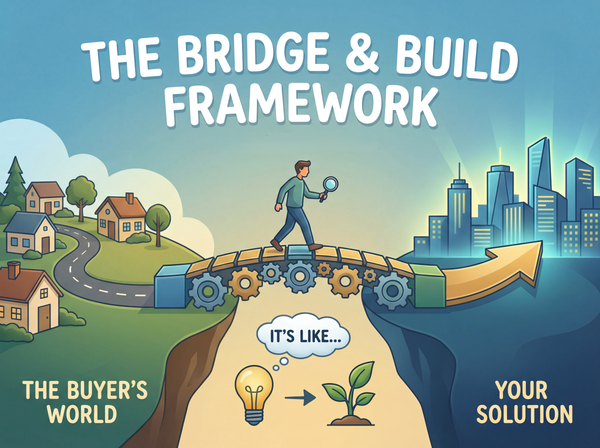From Onboarding to Scaling: The SOP Playbook Every Business Needs
What happens when a key team member is out? Or when a new hire needs to get up to speed fast? That's where Standard Operating Procedures (SOPs) become your secret weapon.
SOPs aren't just about rules; they're about empowering your team, ensuring consistency, and creating a scalable business.
Think of them as the instruction manual for your organization's success.
Why SOPs Are Critical
Beyond the immediate benefit of clarifying individual tasks, a robust SOP framework delivers profound strategic advantages:
- Accelerated Onboarding: New hires get up to speed faster, reducing ramp-up time and increasing productivity almost immediately. No more relying solely on shadowing or inconsistent one-on-one training.
- Ensured Business Continuity & Resilience: When key personnel move on, the knowledge doesn't leave with them. SOPs capture critical processes, making your business more resilient and less vulnerable to disruption.
- Consistent Customer Experience: From the initial sales outreach to post-purchase support, SOPs ensure every customer interaction is standardized for quality and brand voice, leading to higher satisfaction and loyalty.
- Empowered Team Members: With clear guidelines, team members feel more confident in their roles, make fewer errors, and can operate more autonomously. This frees up managers for more strategic work.
- Data-Driven Optimization: Once processes are documented, they can be measured and analyzed. This allows for continuous improvement, identifying bottlenecks, and optimizing workflows for greater efficiency.
- Strategic Scalability: You can't truly grow without repeatable processes. SOPs provide the blueprint for scaling operations, allowing you to expand teams, enter new markets, or launch new products with controlled growth and less chaos.
- Reduced Errors & Rework: By clearly defining the correct way to perform a task, SOPs significantly cut down on mistakes, saving time, resources, and reducing frustration.
In essence, SOPs transform tribal knowledge into institutional knowledge, making an organization smarter, stronger, and significantly more capable of achieving its long-term goals.
The Four Pillars of a Powerful SOP
Every effective SOP, no matter how simple or complex, should be built on four fundamental elements:
- Task (Specific Actions): What exactly needs to be done? Be crystal clear and concise. Avoid ambiguity.
- Example: Draft a follow-up email to new inbound leads.
- Goal: What is the desired outcome of completing this task? Why is it important?
- Example: To nurture new inbound leads and move them further down the sales funnel, ultimately leading to a discovery call.
- Steps (The Exact Sequence): Break down the task into an ordered, step-by-step process. Each step should be actionable and easy to follow.
- Example: 1. Open CRM and identify uncontacted inbound leads from the last 24 hours. 2. Access the 'New Lead Follow-Up' email template in your email client. 3. Personalize the template with the lead's name and relevant details from the CRM. 4. Proofread for typos and grammatical errors. 5. Send the email.
- Why (Reasoning Behind Each Step): This is crucial for understanding and buy-in. Explain why each step is necessary. This fosters a deeper understanding and encourages adherence, rather than just blind obedience.
- Example: Personalizing the template increases engagement rates by demonstrating you've taken the time to understand their specific needs, moving beyond a generic message.
The SAID Principle
To truly make your SOPs effective, you need to make them foolproof. The SAID principle:
- S - Show the exact steps on screen: Don't just tell; show. This is where video becomes invaluable. For every role and every critical task, create a dedicated Loom video. These videos should be screen recordings that walk through each step of the process in real-time.
- Example Loom Video Concepts:
- Sales Role: How to Qualify an Inbound Lead in Salesforce (showing screen clicks, data entry, and CRM navigation)
- Marketing Role: Setting Up a New Facebook Ad Campaign (demonstrating ad platform steps, audience targeting, and budget allocation)
- Customer Service Role: Handling a Common Product Inquiry Call (demonstrating call flow, script usage, and CRM logging)
- Example Loom Video Concepts:
- A - Anticipate their questions before they ask: Think like someone completely new to the task. What common roadblocks or points of confusion might they encounter? Address these proactively within the SOP and the video.
- I - Include your mistakes and how to avoid them: Be transparent. Share common pitfalls you've encountered or seen others make. Explain why these mistakes happen and how to prevent them. This builds trust and accelerates learning.
- D - Define what done well looks like: Don't leave success open to interpretation. Clearly outline the criteria for a task being completed successfully. What are the quality benchmarks? What's the desired outcome?
The System Champion: Your SOP Guardian
SOPs are living documents, not one-and-done projects. To ensure they remain relevant and effective, you need a System Champion. This individual or small team is responsible for:
- Updating: Regularly reviewing SOPs to reflect changes in processes, tools, or best practices.
- Optimizing: Identifying areas where SOPs can be streamlined, improved, or made more efficient.
- Maintenance: Ensuring all SOPs are easily accessible, well-organized, and consistently applied across the organization.
- The System Champion's role isn't just maintenance; it's about scheduled auditing. We recommend reviewing each department's critical SOPs at least quarterly or semi-annually, and less frequently used ones annually. This ensures they remain relevant and optimized, preventing SOP rot.
The System Champion should also be the go-to person for questions and feedback regarding SOPs, fostering a culture of continuous improvement.
Your Central Hub: The SOP Nerve Center
To truly make SOPs accessible and useful, you need a central, organized hub e.g., a platform like Notion.
Within this central hub, create separate pages for each department or major functional area within the company. Each departmental page should contain the following sections:
- Systems Overview: A high-level explanation of the department's core processes and how they fit into the company's overall operations. This provides context for individual SOPs.
- Team & Ownership: Clearly list the team members in that department and their assigned responsibilities for specific SOPs (e.g., who is the owner of the New Client Onboarding SOP).
- Templates and Resources: A repository of all relevant templates (email templates, sales scripts, marketing briefs, etc.), checklists, and other supporting documents needed to execute tasks.
- Performance Metrics: For key SOPs, outline the relevant performance indicators (KPIs) that demonstrate success. This connects the why to measurable outcomes.
- Video Vault: This is where all the Loom videos (or other video tutorials) live. Organize them by task and role for easy navigation.
Tools for Success
Beyond Notion as a central hub, consider these tools to supercharge your SOP implementation:
- Loom: For creating those essential screen-recorded video tutorials.
- Asana or Trello: For task management that can integrate directly with your SOPs, turning documented processes into actionable workflows.
- Google Docs/Sheets or Microsoft 365: For collaborative creation and storage of supporting templates and documents.
By implementing a robust SOP framework, complete with detailed documentation and the right tools, your company will not only achieve greater efficiency and consistency but also build a more scalable operation ready for growth.
Keep Crushing!
- Sales Guy


